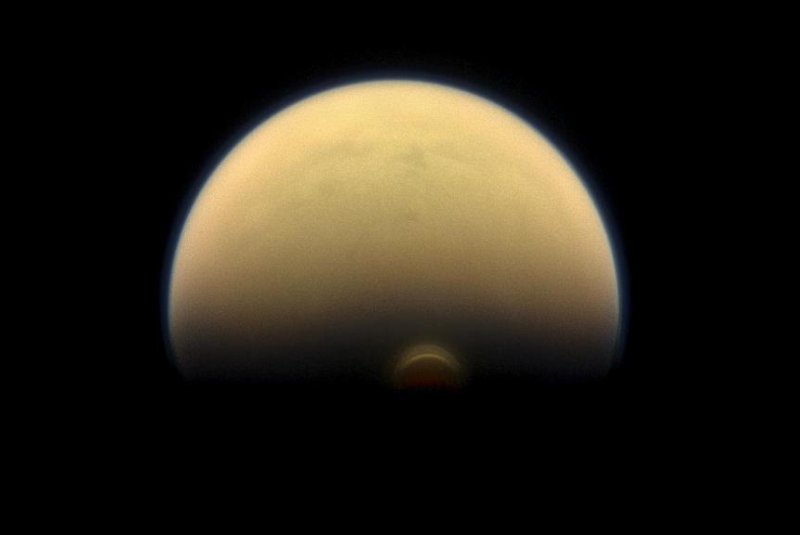PASADENA, Calif., Oct. 21 (UPI) -- Cassini has a front seat for seasonal changes happening on Titan, Saturn's largest moon. Most recently, NASA's spacecraft captured images of a vortex forming in the upper atmosphere above Titan's southern hemisphere -- a sign winter is coming.
Cassini's instruments suggest the swirling, cyclone-like atmospheric pattern is enriched with trace gases. When the NASA probe first arrived at Saturn in 2004, similar seasonal weather patterns were observed in the northern hemisphere. Over the last decade, the moon's atmosphere has reversed its polar orientation.















